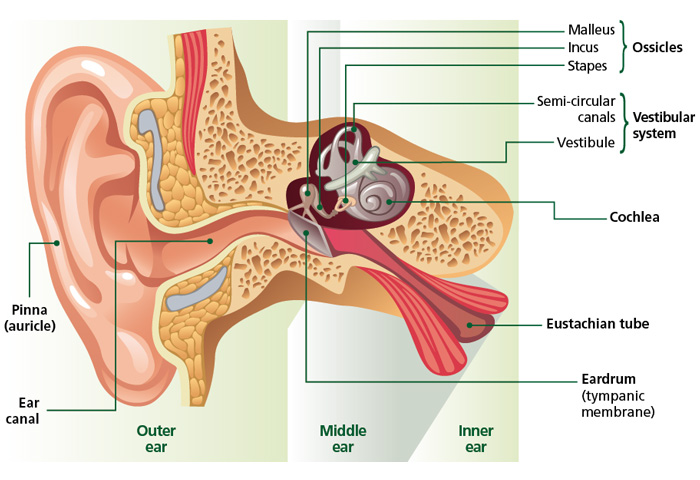The ear has three main parts: the outer, which is the part that can be seen, the middle and the inner ear.

The outer ear consists of the pinna (auricle), which is made of cartilage and skin, and the ear canal. The ear canal is around 2.5cm long and runs from the outer ear to the eardrum (tympanic membrane), which divides the outer and middle ear. Earwax is secreted in the ear canal. Sound waves travel down the ear canal and cause the eardrum to vibrate.
The middle ear is an air-filled space behind the eardrum that contains tiny bones that move with the eardrum’s vibrations and transmit sound waves to the inner ear. These bones are called the malleus, incus and stapes (hammer, anvil and stirrup) – collectively known as the ossicles – and are the smallest bones in the body. The stapes is the smallest of the three at around 3mm x 2.5mm. The Eustachian tube is also in the middle ear and has a role in making the pressure on both sides of the eardrum equal. It also drains fluid from the middle ear to the throat via the back of the nose.
The inner ear (labyrinth) contains the spiral-shaped cochlea, which transforms sound waves into electrical impulses and sends them to the brain via the cochlear nerve, and the vestibular system. This consists of the vestibule and three semi-circular canals and is a complex system of fluid-filled passages that help maintain the body’s balance.
